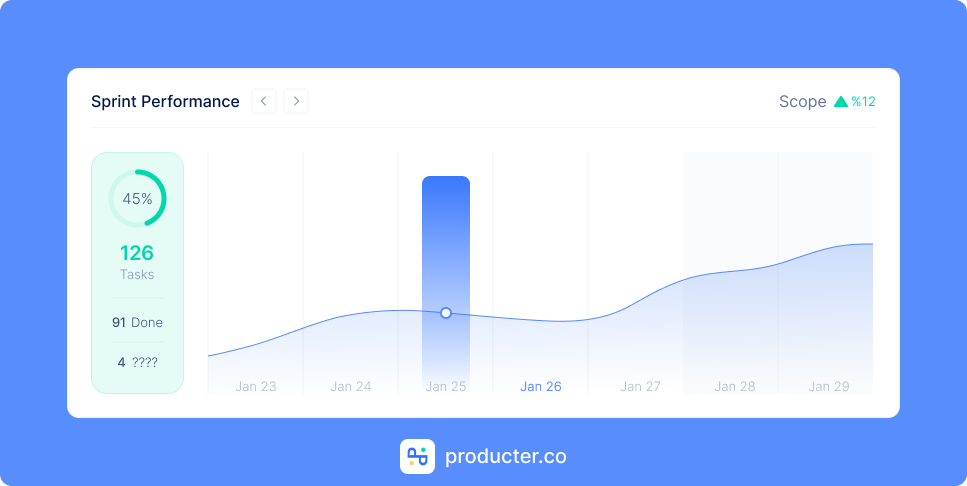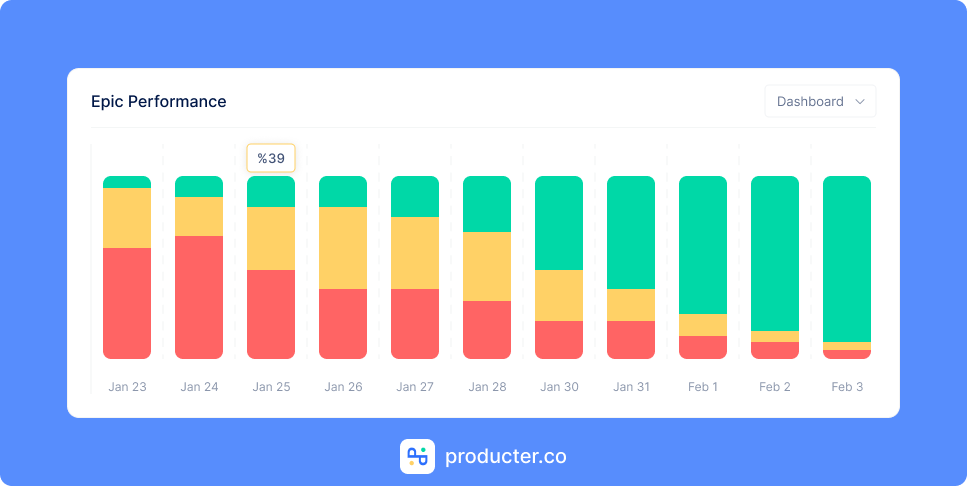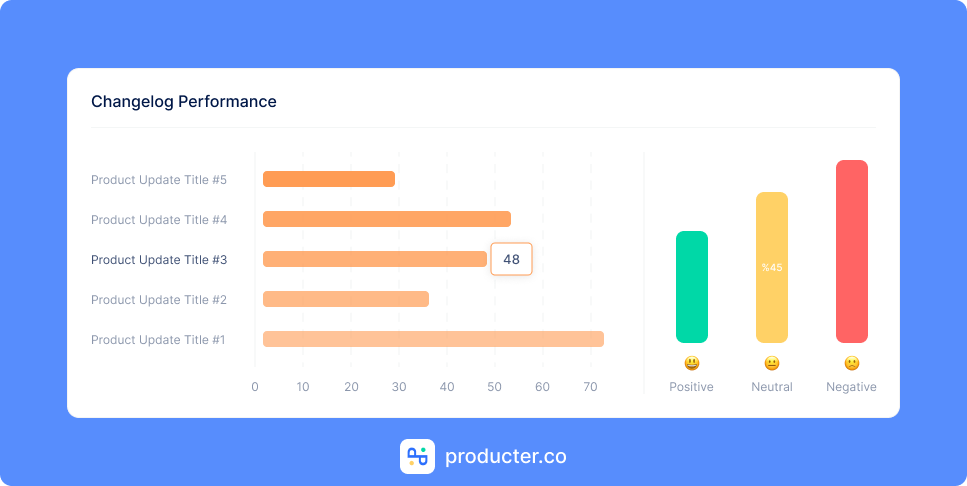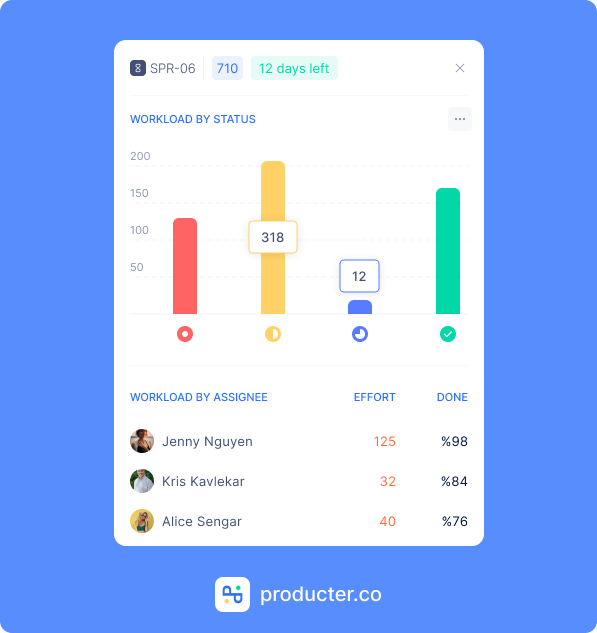As a Product Leader of a SaaS product, it is imperative that you have a clear understanding of how to measure the success of your sprints and teams. This will enable you to be successful.
You can use success metrics to determine whether you are on the right track to achieving your goals, and you can use them to make data-driven decisions about how to improve your processes in the future.
When you are measuring the success of the sprints and teams you are part of, there are some key metrics to keep in mind:

Sprint Completion Rate
It is a metric that is used to assess the percentage of sprint goals that are completed on time.
Having a high sprint completion rate is a positive indication that your team is capable of prioritizing effectively and delivering results efficiently.

With Producter's dashboard feature, you can easily track these metrics and increase your sprint and team success.
Weekly User Feedback Count
In order to develop a successful product, user feedback is a critical component of the process. As a result, it is possible to gain a better understanding of what is working well and what needs to be improved.
To measure user satisfaction and gather actionable feedback from users, consider using numbers like the Net Promoter Score (NPS) to gauge satisfaction.

Feature Development Speed
In order to achieve sprint success, the speed at which features are developed and delivered is one of the key factors.
Customers expect new features and updates to be delivered as quickly and efficiently as possible in today's fast-paced business environment. To meet these expectations and remain competitive, it is important to focus on improving the speed at which features are developed in order to meet these expectations.
Although speed is important to deliver features quickly, if they are not of high quality it won't matter if they are not executed correctly. To make sure that features are delivered efficiently and effectively, it is essential to prioritize quality control and testing in the development process.

Product Update Performance
The performance of your product updates is also one of the key components of a sprint's success. To ensure that your product updates are delivering the desired results, it's important to closely monitor their performance and make adjustments as needed.
Your SaaS product will succeed if you closely monitor product update performance and make data-driven decisions. Although your product updates can perform differently over time, you shouldn't be afraid to adjust as needed.

Some Tips to Increase Sprint Success
A successful sprint can help you deliver valuable product updates, improve team morale, and increase customer satisfaction.
Here are some tips to help increase your sprint success:
Clearly define sprint goals
Defining success for each sprint is the first step. The sprint will have a clear direction if everyone is working towards the same objective.
Prioritize tasks
Successful sprints require prioritizing tasks. Your team should be focused on the most important tasks and understand what must be done first.
Share Results
Share the results of the sprint with the team and other stakeholders. This will help everyone understand the progress that was made and can be a great source of motivation. It can also help to identify areas of success and opportunities for improvement.
Use tools to manage progress
Use tools such as Producter to help you manage progress and keep everyone informed of what is going on.
Keeping the workload to ideal
Finding the right balance between each team member's workload is one of the key challenges of sprint planning.
Your team needs to find the average effort each member can handle to prevent burnout and ensure everyone is working at a sustainable pace.
- Assess workload: Assess the workload of each team member to determine their average effort level. Consider factors such as their skill level, availability, and prior commitments.
- Establish a baseline: Once you have assessed the average effort level of each team member, establish a baseline for their workload. This baseline should be achievable without causing undue stress or burnout.
- Regular check-in: Regularly check in with your team to see how they are coping with their workload. Encourage open and honest feedback and be prepared to adjust their workload if necessary.
- Ensure work-life balance: It's important to ensure that work-life balance is maintained for everyone on your team. Encourage team members to take breaks, go for walks, and prioritize self-care to prevent burnout.

In conclusion, increasing sprint success requires careful planning, collaboration, and a commitment to continuous improvement.
Also, it is essential to find the average effort level for each team member and not exceed that effort. This will help prevent burnout and keep the team motivated and productive.
Remember, sprint success is not just about meeting deadlines and delivering results; it is also about fostering a positive and productive work environment for the team. By prioritizing the well-being and success of team members, you can help ensure that sprints are successful and that the SaaS product continues to grow and thrive.
Producter is a product management tool designed to become customer-driven.
It helps you collect feedback, manage tasks, sharing product updates, creating product docs, and tracking roadmap.






